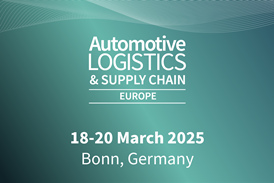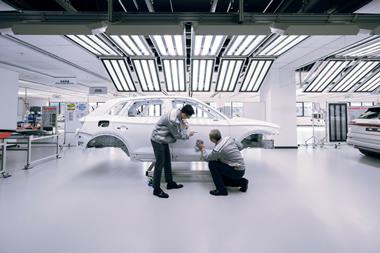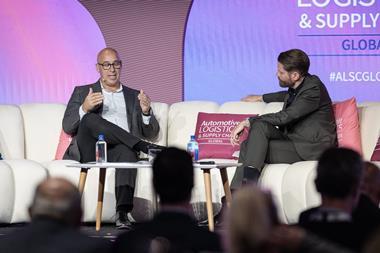Bo Andersson has been leading a remarkable turnaround and a tough restructuring at Russia’s GAZ Group, with a significant focus on improving supply chain management and logistics. Christopher Ludwig presents a pertinent example of how logistics can provide a competitive advantage in Russia.
When Bo Andersson stepped down as group vice president, purchasing and supply chain, at General Motors in 2009, he left a carmaker in the midst of bankruptcy and a government bailout to become the president and CEO of Russia’s GAZ Group, a manufacturer of light commercial vehicles (LCVs), trucks, buses and components owned by Oleg Deripaska’s Basic Element group.
Andersson did not go from one carmaker in crisis to another on the rise. In 2008, as Russia’s sales boom went bust, GAZ lost more than 30 billion roubles ($1 billion at contemporary exchange rates). It owed hundreds of millions of dollars to suppliers and revenue was in freefall, dropping 54% in 2009. The company also had serious structural issues, from painfully high warranty costs to a woefully inefficient workforce of around 90,000.
At the time Andersson joined the company, GAZ was part of a consortium, together with Magna and Russia’s Sberbank, that had agreed to buy a controlling stake in GM’s Opel/Vauxhall–a decision GM later reversed. But GAZ has nevertheless staged a remarkable turnaround on its own.
Production has nearly doubled in the past two years, as LCVs reached 105,000 units in 2011, with sharp rises in revenue for other segments too. GAZ has also won significant contract manufacturing deals with Volkswagen, GM and Daimler, which will add production of around 100,000 units by 2013 and more than 130,000 by 2015. This is a significant use of plant capacity after Andersson cancelled GAZ’s poorly performing passenger car production of the Volga Siber in 2010.
Andersson has led a major restructuring, along with a productivity and quality push to establish a stable footing for the growth. The proof is clear in the results: the group swung to a profit of 2.1 billion roubles ($70m today) in 2010 following losses of 10.6 billion roubles in 2009. While official results for 2011 had not been finalised at the time of going to press, GAZ estimates that revenue grew 37%. Net debt has also been reduced, from 38.5 billion roubles in 2010 to 33 billion in 2011.
But the work is not done. The group’s sprawling production network for all vehicles includes 13 plants in 10 different regions of the country. The objective is to eventually consolidate this to five plants.
Andersson joined GM in 1987 and spent most of his career in purchasing and supply chain management. He has often emphasised the positive impacts that a consistent logistics and supplier performance focus can have on manufacturing and now he speaks at length about the role it has played in GAZ’s resurgence. His technical grasp of the subject is remarkable for a chief executive, yet perhaps essential in Russia.
“There are many people who may regard it as ‘just’ purchasing and supply chain, but when you control 65% of the cost structure of a company, the importance is obvious,” he says.
For Andersson, improving supply chain management has been fundamental to profitability; including reducing inventory, increasing production efficiency and shortening outbound vehicle and spare parts delivery lead times.
Such improvements have been at the heart of the turnaround efforts at GAZ over the past three years, which he outlines in four broad areas: staff reductions; faster product launches; increased quality monitoring; and a switch to an order-based production system.Since 2009, GAZ has reduced headcount to around 57,000 employees, including a 66% reduction of management staff, which helped convince unions to accept a 33% cut in hourly-paid workers. “This manpower right-sizing has put pressure on productivity and on suppliers,” says Andersson, “especially now that LCV output has doubled to 500 units a day compared to 2009 and GAZ has released a raft of product launches.”
Despite the reductions, GAZ’s production system has responded well, with monthly revenue per employee–one of Andersson’s favourite statistics–rising 25% in 2011 to 180,000 roubles, the highest it has ever been.
Andersson says such gains would not have been possible without the lean processes and manufacturing stability supported by the logistics function. “With our growth, there is heightened pressure on suppliers and on us to be firmer on scheduling and improving inbound logistics,” Andersson says.
Equal to cuts, Andersson has pushed quality at every level of operations, from monitoring 100% of inbound material to auditing parts and then acting swiftly to change problematic suppliers or production as a result. In some cases, GAZ moved from in-house production to outsourcing to global suppliers in Germany, Poland, Hungary, Turkey and China.
For example, the company identified that one of the most common complaints among its LCV customers was the clutch; the company immediately switched to a ZF-built model imported from Europe. Other areas in which it switched from in-house production to imports were brakes (from Robert Bosch), steering (also ZF) and cardan shafts (from Turkey’s Tirsan). GAZ also began a new programme in 2011 sourcing 2.8-litre Cummins diesel engines built in China.
These supplier shifts have required new logistics flows different to anything the company was doing before. For example, the 25,000 diesel engines GAZ imported from China last year had lead times of about 40 days to the LCV factory in Nizhny Novgorod–some 400km east of Moscow– compared to 12-hour lead times for in-house built powertrains. For 2012, Andersson says the company will import 50,000 engines from China. “It tests our logistics capabilities and requires a new focus. As we have not had that many projects yet, we currently have the benefit of learning case by case,” Andersson says.
Perhaps the company’s most radical action has been to switch to an order-driven production system for LCVs. On the 10th of every month, GAZ requires dealers to give the factory a two-month forecast and a one-month fixed batch of orders. GAZ also requires dealers to pre-pay for the vehicles they will receive in the next month.
“I did this to make sure that we didn’t have incomplete vehicles [in the factory] and secondly so that we would understand that these are not ‘our’ vehicles, because they have already been sold and paid for,” Andersson says.
The change in production has helped to lower dealer inventories by two-thirds. Along with savings for inventory financing costs, Andersson says that he has also increased the dealers’ profitability by 3-4% in exchange for the pre-payment, a price he believes is worth paying to focus the supply chain towards faster delivery.
Although the execution of these organisational changes might vary, the aim is clear: to satisfy dealers with improved quality and on-time delivery of vehicles and spare parts. Andersson is pleased with the progress thus far, but he admits there is still a long way to go.
Improving the supply chain from within
Andersson had a reputation at GM for spending a lot of time with suppliers–including early morning and weekend visits– to measure performance and push hard for better efficiency and cost savings. Supplier opinions on his management style may have varied, but few would disagree that he was fair, tough, demanded consistency and yielded results. Under his leadership GM shaved $2 billion off its $87 billion annual purchasing budget.
The expectations in Russia have been that Andersson would focus much of his seemingly limitless energy on an underdeveloped Russian supply base. Certainly, he did not come into a world-class production environment. Using problem parts per million (PPM) as a comparison, Andersson says that the level among European or North American suppliers is typically 25-50 PPM; when GAZ started monitoring inbound material in 2009, it discovered a rate of 5,000 PPM. The rate is now better but still around 1,000 PPM, he says.
There have been notable quality improvements. In 2011 there was a decrease in warranty costs of 45% in some areas and a nearly 25% decrease in rework costs compared to 2010. However, there are those in Russia who have criticised Andersson for not being tough enough on suppliers, he says.
By his own admission, Andersson has spent more time on internal staff and with dealers identifying quality issues than he has spent chasing suppliers on cost and delivery. “To date, I’ve focused more on improving ourselves than on helping suppliers with qualitative delivery performance,” he says.
The reason is not that Andersson has gone soft amidst the cold, easterly winds of Nizhny Novgorod, but because the former Swedish military officer has as strong a sense of fairness as he does of hard work. Andersson didn’t think GAZ was in a position to come down hard on suppliers to which it owed so much money.
“I felt embarrassed that we had so much debt to the supply base. It was important that we could improve our own credibility, clean up our own plants and help suppliers by having more stable schedules,” he says.
To help improve payment consistency, Andersson renegotiated its terms of payment with suppliers from 20 to 41 days. But suppliers can go back to the 20-day terms if GAZ misses a single payment. “In the last year we have been close to perfect payers, although not 100%,” he says. “GAZ is getting much closer to a global purchasing standard for suppliers’ expectations.”
As well as payments, Andersson aimed to establish reliability in its production. GAZ installed 100% monitoring on its material flow, determining where it may need to add inventory to avoid potential disruptions and where it could remove stock. For some suppliers, the performance was already good enough to move to direct line shipments, whereas others required extra buffer stock.
“If you consider the entire group including buses, trucks and powertrain, we handle about 56,000 parts, so it is a large operation,” Andersson says. “In some cases, we have allowed for more inventory to avoid stoppages and have simplified our build processes where we can. If we don’t manage this well, we are not managing the company.”
Following these improvements, the company has begun a more formal approach to performance measurement with suppliers. Since last summer, GAZ has been rolling out a scorecard system similar to the metrics used at GM, with scheduled ratings on delivery, quality, service and price.
One of the targets will be reducing inventory levels. While the company has increased inventory of certain critical components, average levels have been lowered from around 21 days of supply in 2009 to one week today. Much of that drop has been thanks to better production discipline and writing off obsolete material (virtually unheard of at GAZ before Andersson). An inventory reduction programme before the New Year eliminated $100m worth of old material, for example.
As part of the evaluations, GAZ also began a value-stream mapping process with 20 suppliers, tracing their entire supply chains including inventories of incoming raw material held at plants, in transport and at GAZ, as well as daily delivery and production levels. In the case of one pedal supplier, the programme helped to lower inventory at the supplier by more than 90%, whilst decreasing the amount of inventory held by GAZ from six days’ stock down to one day, for a savings of 650,000 roubles per month of that one part.
In another evaluation, GAZ made the decision to take air inlet chest gasket production in house. Thanks to a reduction in transport and warehousing costs, GAZ was able to reduce stock and lead-time by 50% and to lower the overall piece price by 20%.
The specific role that logistics providers play in these improvements is important, but complicated on the inbound side by the fact that suppliers often maintain responsibility for delivery. GAZ also operates a large proportion of its logistics in house. Andersson sees scope for improved outsourced services but in particular he wants to make further use of GAZ’s own assets.
According to Andersson, about 50% of GAZ’s suppliers pay for transport to the factory. For the remaining, the company spent about $60m for inbound logistics in 2011 out of a total purchase material bill of $2.2 billion. The supply base itself is highly localised and vertically integrated, with GAZ producing about 50% of components itself, including all stamping, axles, seats and gearboxes. About 40% of suppliers deliver to the factories from within a 5-6 hour radius, 35-40% from a 12-hour radius and the rest are more than 24 hours away. About 60 suppliers are based outside Russia.
The flows from longer distance suppliers are those which GAZ wants to improve, but Andersson admits the company is “way behind” European players. For imported parts, however, he says that GAZ tends to use global logistics providers and receives better service. The supply chain from Turkey for the Tirsan cardan shafts, for example, is highly efficient.
“It takes about 12 days from Turkey and we transport 25 shafts in a box and move directly to the line,” says Andersson. “It is an example where we are also using rail successfully.”
GAZ manages all of its in-plant transport at Nizhny Novgorod with an owned fleet of 300 trucks; it also owns 5km of railway tracks and seven locomotives. Andersson says his team is currently looking into using its trucks to do milkruns for suppliers within 3-4 hours of the plant. “Since we have our own trucks, it is likely that we will do this with our own assets,” he says.
Andersson admits that the opportunities to outsource more to logistics providers–including subassembly and sequencing– are fewer at GAZ because of relatively competitive wages and lower levels of complexity. However, he says that the ramp-up of contract manufacturing at GAZ could change this.
GAZ has already started building 26 Skoda Yeti models per day on an SKD basis; in November, it will switch to CKD. Next year, the plant will add the Skoda Octavia, VW Jetta, Chevrolet Avio and Mercedes Sprinter van.
In preparation for the contract manufacturing, Andersson says that the company has been auditing the quality of its in-house logistics assets and operations. “We’ve recently done a full audit of all of our rail tracks at the plant,” he says. “We are also looking at certain road crossings that we will need to repair or widen to be able to handle the volume of containers that will be coming into our container yards.”
The next major area of focus for inbound logistics will be on packaging, particularly for metal racking and the equipment used for in-plant movements. “With better packaging I think we have an opportunity to reduce the internal handling inside the plant,” he says.
Outbound logistics is more competitive
For outbound logistics, Andersson believes that GAZ’s performance, with the exception of higher damage rates, is in line with European standards, particularly for the LCV business. With its 220-strong dealer network, LCVs represent GAZ’s most competitive segment and that most dependent on fast order-to-delivery times.
To speed up delivery after the switch to an order-driven production system, GAZ gave an LSP immediate responsibility for LCVs as they come off the assembly line. Thanks to directto- dealer deliveries, lead times from Nizhny Novgorod to Russia’s main western markets have been cut to between 2-5 days. Long distance deliveries, which more often go by rail, take about 10 days to Russia’s central region and 20 days to the Far East.
GAZ has switched from using one outbound logistics provider to a current network of five to foster competition and allow better delivery coverage across the country. Andersson says that in future this number could be reduced to three, but he believes outbound lead times for vehicles and spare parts are a competitive advantage for GAZ.
GAZ’s order-driven production and fast-moving distribution have helped to drastically reduce vehicle inventory. In mid 2009, the company carried about 30,000 vehicles at its dealers–about 90 selling days–whilst GAZ held another 2,500 at its own yards.
Today, GAZ carries only 30-35 days worth of stock at dealers and has eliminated its distribution centres except for a 250-vehicle capacity yard at the plant, which is also managed by an LSP. For a factory that produces around 500 LCVs per day, this level of inventory represents a very lean outbound operation.
GAZ has also made changes to speed up the order-todelivery times for its custom-built vehicles. The company took its outfitter operations in-house, such as refurbishing LCVs into ambulances, police, military and school vehicles. Andersson says that a specialised vehicle ordered from GAZ can now be delivered in as little as 2-3 weeks.
The company delivers about 10% of vehicles by rail (excluding what the government uses), a number that Andersson believes should rise. However, for rail to be competitive in Russia, his logistics team estimates that the distance travelled must be about 1,500km or longer, compared to 500km in Europe. The volume necessary to use rail would also make it more difficult for GAZ to dispatch vehicles direct from the line to meet its strict delivery lead times of 2-5 days for its main markets. “I would prefer to use more rail, but there are limits to the system,” Andersson says.
Andersson also believes that GAZ’s outbound spare parts deliveries are a strong advantage in Russia. A two-and-a-half year study has revealed that 95% of GAZ’s LCV customers get their vehicles repaired on the same day. This has been the result of good delivery results, as well as a campaign by GAZ to educate dealers about having safety stocks of certain parts. GAZ has run a promotion at dealers, for example, where it put stock of 10-20 critical parts such as fuel filters or turbochargers on its own account.
Operating in Russia presents its own set of unique and welldocumented regulatory issues. Andersson sees customs as a major challenge for OEMs in terms of slow-moving processes and relatively high costs. Despite the benefit of a customs clearance office onsite at Nizhny Novgorod, Andersson says that moving material through St Petersburg, Moscow or Uzbekistan is a challenge. As GAZ’s contract manufacturing revs up and increases material imports, dealing with customs efficiently will be considerably more important.
To ensure an open and transparent organisation, GAZ has implemented a zero-tolerance policy to corruption, adds Andersson. The company created a hotline where suppliers, providers or dealers can report any issues. “We put the stake in the ground and said that this is a very competitive business. As we have global customers, we must have the same zero tolerance to corruption as they do.”
GAZ is also in a unique position in terms of Russia’s industrial policy, which has combined interventionism and protectionism with harmonisation of trade at certain levels, such as Russia joining the World Trade Organisation (WTO). GAZ sees both negatives and positives as a result.
Duty and import tariffs are a case in point. GAZ has had some measure of protection behind a 25% duty on imports for LCVs, but this will drop quickly to 10% once Russia officially adapts WTO rules this year. Import duties for buses will also drop. Overall, GAZ expects the lower duty to lead to more imports of used commercial vehicles from the West.
On the other hand, Andersson believes that WTO membership will bring down certain material import duties and open up opportunities in the supply chain. Of 120 global suppliers, GAZ says that only 46 are currently working in Russia, most through joint ventures. The slow development is partly a result of high import duties–tariffs are currently 10% for raw material and 30% for tyres, for example.
“When Russia officially adapts WTO rules, [vehicle import] duties will drop and will make our life tougher, but I’m sure that the component price will benefit as the supply base becomes more competitive,” he says.
Andersson is glad that even as Russia joins the WTO, the government is sticking to the regulations that it put into place earlier in 2011 under Decree 166, encouraging localisation. Under this arrangement, carmakers committed to minimum production levels of 300,000 vehicles and 60% localisation rates in exchange for zero import duties. It was this regulation that helped compel VW, GM and Daimler to partner with GAZ.
Russia has negotiated exemptions for this policy in gaining WTO membership. For example, Russia will only decrease passenger car import duty to 25% from 30%, and it will remain at that level for seven years.
Andersson says that working with government in Russia is tougher for GAZ than its majority-state owned competitors Avtovaz and Kamaz, but he also points to the Kremlin’s strong support. GAZ would not have been able to secure the contract manufacturing deals without the government’s help. Furthermore, Vladamir Putin, the prime minister recently elected once again as president, has visited the factory four times since Andersson took over the company.
Andersson says that he consistently updates Putin with figures regarding the company’s employee and manufacturing productivity. “Mr Putin is a good listener and a good studier. He understands that you need to manage productivity,” says Andersson. “I measure revenue per employee, rework reduction and then compare that with salary costs. His people don’t like when I show him these charts because then he will ask it about other industries.”
During the last visit to the plant by Putin and the outgoing president, Dmitry Medvedev, the government confirmed a 38 billion-rouble loan to the group from Russia’s leading state bank, VTB.
Light vehicle impact
- Import duties for cars will drop from 30% to 25% (12.5%-15% after 7 years)
- Import duties for LCV will drop from 25% to 10%
Truck sector
- Import duties will drop from 25% to 10-15% (3-12% after 4 years)
- No impact expected on off-road truck market until 2015- 2017
Bus sector
- Import duties for new buses under 120 passenger capacity will drop from 20% to 10% for first five years
- Import duties for buses of more than 120 passenger capacity will go down from 10% to 7.5% during the first two years
- Import for Euro-4 coaches will rise from 0% to 20% for first five years, reverting to 10%
Source: GAZ
Dear Mr Putin, more roads, rail and ports, please
Andersson says that he has one desire from the government that would trump any measure of industrial intervention or tariff policy, and that is for it to invest more in infrastructure for road, rail and ports. With GAZ anticipating that the Russian market will add another million light vehicles in sales by 2015–to 3.8m–these investments would be essential.
“GAZ benefits today because we make the best trucks for the Russian roads, but I would say that my one wish from the Russian government would be to spend more money on infrastructure development,” he says.
Along with infrastructure, he also sees a lag in the development and in the quality of services offered by global logistics providers in the country, even as the market recovers. But he believes that the increased production following Decree 166 will benefit the logistics market in Russia, too.
“The 166 regulation will bring a huge increase in logistics traffic and I think all of the big logistics players are looking at this because it will be a necessity [for Russia] and a business opportunity. I anticipate a dramatic change in the next three years,” concludes Andersson.
























